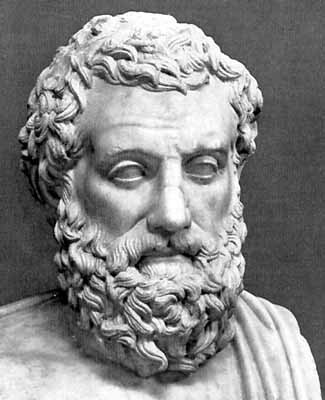vendredi, 27 janvier 2017
The Eight Traditional European Celebrations of the Seasons
19:31 Publié dans Traditions | Lien permanent | Commentaires (0) | Tags : traditions, traditions européennes, paganisme, liturgie, cycle des saisons, chandeleur, ostara, équinoxe de printemps, équinoxe d'automne, beltaine, lugnasad, samhain, solstices, solstice d'été, solstice d'hiver |  |
|  del.icio.us |
del.icio.us |  |
|  Digg |
Digg | ![]() Facebook
Facebook
mercredi, 11 novembre 2015
Jean Haudry: Aux sources de notre identité
Jean Haudry:
"Aux sources de notre identité : les racines Indo-Européennes"
Conférence de Jean Haudry "Aux sources de notre identité : les racines Indo-Européennes", organisée par le Cercle Afl Okkat le 07 octobre 2015 à Strasbourg.
Présentation :
L’Europe, confrontée à des défis sans précédent qui menacent de bouleverser irrévocablement son paysage ethnique et culturel, se cherche un destin et s’interroge sur son identité.
L’Europe, ce n’est ni Lampedusa, ni Bruxelles : il ne s’agit ni d’un espace aux frontières fluctuantes, ouvert à tous vents et porteur d’un système de valeurs abstraites et universelles, ni d’un espace économique voué à s’étendre au-delà de l’Atlantique, au mépris des réalités géopolitiques.
L’Europe, c’est d’abord un ensemble de peuples héritiers d’une très ancienne culture commune, vieille de plusieurs millénaires, qui s’est déployée à partir de son foyer originel jusqu’aux confins de l’Asie. De cette matrice, à laquelle les spécialistes ont donné le nom de culture « indo-européenne », sont notamment issues les langues et les civilisations grecques, latines, celtiques, germaniques, baltes et slaves.
Prendre conscience de la richesse de cet héritage commun constitue plus que jamais pour les Européens enracinés un enjeu majeur : « qui contrôle le passé, contrôle le présent », affirmait George Orwell. C’est aussi la raison pour laquelle certains idéologues, s’appuyant sur une argumentation pseudo-scientifique pour promouvoir l’idée de culture « métisse », prétendent littéralement « déconstruire » notre passé en refusant à notre civilisation toute origine spécifiquement européenne.
Ces attaques en règle contre notre « longue mémoire », récemment renouvelées avec l’appui des media, ne résistent cependant pas à un examen scientifique sérieux, prenant en compte les données de la linguistique, de la mythologie comparée, de l’archéologie et de la génétique des populations.
Soucieux de contribuer à la nécessaire ré-information sur ce sujet essentiel, le cercle Afl Okkat fait appel à un éminent spécialiste, le professeur Jean Haudry.
Normalien, agrégé de grammaire, professeur émérite de l'Université Lyon III, ancien doyen de la faculté des lettres, ancien directeur d’étude à l'École Pratique des Hautes Etudes, Jean Haudry est l’auteur de nombreuses études sur la linguistique et la civilisation indo-européennes (notamment deux manuels parus dans la collection « Que sais-je ? »). Il prépare actuellement un « Dictionnaire de la tradition européenne ».
00:05 Publié dans Nouvelle Droite, Synergies européennes, Traditions | Lien permanent | Commentaires (0) | Tags : racines européennes, indo-européens, jean haudry, traditions européennes |  |
|  del.icio.us |
del.icio.us |  |
|  Digg |
Digg | ![]() Facebook
Facebook
mardi, 16 août 2011
Aeschylus' Agamemnon: The Multiple Uses of Greek Tragedy
Aeschylus’ Agamemnon:
The Multiple Uses of Greek Tragedy
Jonathan BOWDEN
Ex: http://www.counter-currents.com/
 Greek tragedy is all but forgotten in mainstream culture, but there is a very good reason for looking at it again with fresh eyes. The reasons for this are manifold, but they basically have to do with anti-materialism and the culture of compression. To put it bluntly, reading Greek tragedy can give literally anyone a crash course in Western civilization which is short, pithy, and terribly apt.
Greek tragedy is all but forgotten in mainstream culture, but there is a very good reason for looking at it again with fresh eyes. The reasons for this are manifold, but they basically have to do with anti-materialism and the culture of compression. To put it bluntly, reading Greek tragedy can give literally anyone a crash course in Western civilization which is short, pithy, and terribly apt.
Let’s take — for purposes of illustration — the first part of the Oresteia by Aeschylus, which concentrates on Agamemnon’s murder by his wife Clytemnestra. This work would take about two hours to read in a verse translation by Lewis Campbell (say). You will learn more about the civilization in those two hours than many a university foundation course, or hour after hour of public television, are capable of giving you.
The real reason for perusing this material, however, is the sense of excitement which it is capable of generating. Agamemnon and his entourage have returned to Argos after the successful sack of Troy and the destruction of Priam’s city.
A series of torches across the Greek peninsula announces the triumph, and the Watchman on the palace roof is the first to bear witness to the signal. The Chorus of Argive Elders soon gathers and is addressed in turn by a herald and then Clytemnestra. She swears undying loyalty to her husband (falsely) and makes way for his triumphant entry, although for those with acute ears there is a sense of foreboding in the imagery and early language of the play.
Agamemnon enters and speaks of his victories, but is ill-disposed to walk on the purple vestments that his wife has had strewn on the ground. He considers them unworthy or liable to damage his standing with the Gods. Clytemnestra seems to want her husband to behave more like an Eastern potentate than a Greek monarch. After much show of reluctance — he accedes to his wife’s wishes, kicks off his sandals and walks on the Imperial purple . . . in a manner that Clytemnestra knows will antagonize the Gods. She wishes this due to the future assassination which she has in view.
The prophetess Cassandra is then introduced from Agamemnon’s car, and she outlines — in ecstatic asides and verbal follies — the likelihood of her paramour’s death at the hands of his wife. She also speculates on the origin of the curse deep in the history of the House of Atreus — when Thyestes’ own children were baked in a pie for the edification of their father in revenge for adultery. This sets in train the codex of revenge and hatred which inundates the House’s walls with blood and gore and sets the ground for new horrors at a later date. Cassandra, surrounded by the near-seeing and purblind chorus, goes into the House where her Fate is sealed.
After a discrete interval, Clytemnestra emerges in one of the most dramatic sequences in all of Western art. She clutches a dagger in one hand and is partly covered in blood; whereas Agamemnon, her previous lord and husband, lies dead inside the folds of a net, with Cassandra raving and raving over him. The prototype for Lady Macbeth and every other three-dimensional female villain, Clytemnestra boasts of her deed and how she executed it — to the shock, horror, and awe of the Argive elders.
The killing is justified — in her eyes at least — by the sacrifice of her daughter, Iphigenia, to make the wind change its direction when the Greek fleet is becalmed at Aulis on the way to Troy. For this willful act of child-murder, Clytemnestra has lain in wait with her lover, Aegisthus, to slay the King of Argos. (Aegisthus is descended from Thyestes and has his own reasons for wishing doom to the House of Atreus.)
This particular play ends with a confrontation between Aegisthus’ soldiers and the elderly members of the Chorus, but Clytemnestra — by now sick of bloodshed and desiring peace — intervenes so as to prevent further conflict. The play concludes with the two tyrants, surrounded by their mercenaries, walking back towards the palace where they will rule over the Argives.
The question is always raised in modernity: Why bother with this material now? The real reason is the abundant ethnic and racial health of ancient Greek culture. Although tragic, blood-thirsty, and mordant in tone, it is abundantly alive at several different levels. It also exists as the prototype for so much Western culture, whether high or low.
As I have already intimated, a two-hour read is broadly equivalent to a short university course in and of itself. Also, the pre-Christian semantics of this material speaks across two and a half thousand years very directly to us today, certainly in the post-Christian context of Western Europe. Another reason for parents reading this material to adolescent children (at the very least) is its pagan immediacy. This is not cultural fare that can be dismissed as lacking pathos, blood-and-guts, or a sense of reality, if not normalcy.
Another reason for refusing to give this work a wide berth has to be the fact that various forces which were out-gunned and defeated in the twentieth century definitely took the Greek side in various cultural debates. This can also be seen in Wyndham Lewis’ Childermass which I reviewed [2] elsewhere on this site, where the chorus of opposition to the Humanist Bailiff (a sort of democratic Punch) has to be the philosopher Hesperides and his band of Greeks.
The culture of the Greeks still has dangers associated with it, hence the re-routing of Classics to a netherworld in the Western academy. Yet the refutation of Bernal’s Black Athena is still everywhere around us; as long as people have the wit to pick up the plays of Aeschylus and read.
Article printed from Counter-Currents Publishing: http://www.counter-currents.com
URL to article: http://www.counter-currents.com/2011/08/aeschylus-agamemnon/
00:05 Publié dans Littérature | Lien permanent | Commentaires (0) | Tags : tragédie, théâtre, antiquité grecque, grèce antique, hellénisme, eschyle, traditions, traditions européennes, littérature, lettres, lettres grecques anciennes, littérature grecque ancienne, philologie classique |  |
|  del.icio.us |
del.icio.us |  |
|  Digg |
Digg | ![]() Facebook
Facebook
jeudi, 17 mars 2011
Jean Haudry: 1 h 30 d'entretien

Jean Haudry était l’invité de Méridien Zéro…
Pour écouter l’émission N° 39 datée du 6 Mars, cliquez sur le lien ci-dessous…
http://meridienzero.hautetfort.com/
Pour l’enregistrer, cliquez sur le lien ci-dessous
00:12 Publié dans archéologie | Lien permanent | Commentaires (0) | Tags : jean haudry, traditions, traditions européennes, archéologie, indo-européens, histoire, protohistoire, préhistoire |  |
|  del.icio.us |
del.icio.us |  |
|  Digg |
Digg | ![]() Facebook
Facebook



